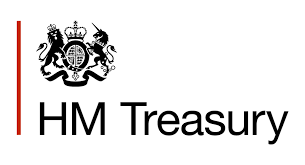PRESS RELEASE : Western link still represents value for money, despite cost increase [June 2022]
The press release issued by Norfolk County Council on 24 June 2022.
Cost rises mean Norfolk County Council could spend £8m more on the Norwich Western Link – but it remains value for money, bringing major benefits.
Due largely to inflation and refining part of the route to protect barbastelle bat roosts, the road’s total bill has risen from £198m to £251m.
A report to the County Council’s cabinet says that the 3.9 mile-long road still represents value for money under the Government’s criteria, as it would bring major economic, transport and air quality benefits to Norfolk
It says:
- The overall cost has risen to £251 million, largely due to inflation
- The Council had already asked the Government to fund 85 per cent of the total and will seek the same percentage now the cost has risen – which would mean a £213m Government investment in Norfolk
- The County Council’s share of the bill would rise £7.9m to £37.7m
The report recommends that councillors proceed with the road, as it still represents high value for money and will bring major benefits, including:
- Improved journey times, reduction in accidents, easing of rat-running through villages and better air quality
- A boost to the economy, through reduced journey times and improved productivity
- A likely reduction in carbon emissions ranging from 177,000 tonnes to 350,000 tonnes, when carbon from constructing and using the road is taken into account
County Council leader, Councillor Andrew Proctor, said: “No cost increases are welcome but inflation and cost of living rises are affecting us all and they are hitting major transport schemes across the country.
“The report is clear that the case for the road remains strong; that it would still represent high value for money; and that it could attract substantial Government investment.
“This week’s Government decision to fund the dualling of the A47 between Blofield and North Burlingham shows that there is confidence in Norfolk’s infrastructure plans and that bodes well for the western link.
“My cabinet will look at this report in detail on 4th July and consider all the facts carefully, before taking a decision in the best interests of Norfolk.”
Councillor Martin Wilby, cabinet member for highways, infrastructure and transport, said: “Despite the increased costs, there is a strong case for the Norwich western link.
“Building it would enable us to reduce congestion, cut journey times, tackle rat running through villages and form part of a wider series of transport improvements in and around Norwich.”
Councillor Andrew Jamieson, cabinet member for finance, said: “We have been very transparent in this report about the cost increase, the reasons for it and what it could mean for the county council’s contribution.
“An £8m increase in the County Council’s contribution could be covered by prudential borrowing and would not lead to any cuts to services.”
The report says the benefits of the Norwich Western Link are:
Significantly reducing many journey times to the west of Norwich, with some more than halving, and shortening response times for many ambulances travelling to the Norfolk and Norwich University Hospital;
- Reducing carbon emissions from vehicles by making many journeys more efficient, which supports local and national carbon reduction targets and improves air quality around Norwich;
- Boosting Norfolk’s economy and support its businesses by reducing transport costs, opening up new markets and increasing productivity through quicker and more reliable journeys;
- Improving road safety, with over 500 fewer accidents involving a motor vehicle over the next 60 years;
- Taking traffic off unsuitable local roads though communities including Weston Longville, which will see a reduction of approximately 80% in through traffic, leading to an improved quality of life for local residents from an environmental and safety perspective and supporting people to walk, cycle and use public transport;
- Creating new habitats and improving existing ones across a wide area to the west of Norwich to support a range of wildlife and provide connectivity through green bridges and wildlife underpasses



